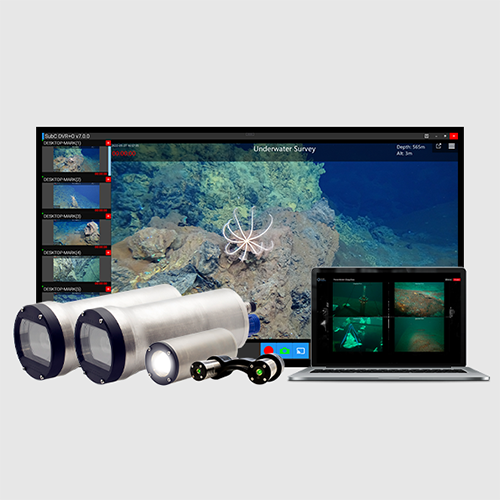How the Right Subsea Cameras Make Subsea Surveys & Research Easier
Subsea imaging is an essential tool for marine observation, research, and surveys. Subsea imaging technology has advanced significantly in recent years, making it easier than ever to capture high-quality images of subsea environments. From high-resolution cameras to specialized underwater drones, subsea imaging and cameras can provide researchers with a wealth of data to explore the depths of our oceans.
This blog post will explore how the right subsea imaging and cameras can make subsea research easier, more efficient, and more effective. Plus, we’ll review factors that will help you decide the right deep sea camera for your needs.
Who is Subsea Imaging for?
The variety and quantity of data that subsea cameras can provide are nearly limitless. As such, subsea systems are used for research, exploration, and observation in oceanography, marine biology, and oil and gas exploration. Subsea imaging is used in these fields as well as others such as geology, archaeology, and meteorology.
Regardless of the application, it's important that an organization has a reliable subsea camera system because they are used in many different contexts where they must be able to withstand harsh conditions while still performing as expected. Using our subsea systems for their ocean imaging needs has helped organizations like these continue to gain new insights into ocean ecosystems and marine life while publishing groundbreaking research time and time again.
Making Subsea Surveys & Research Easier
A wide variety of tools exist for underwater research, and subsea cameras are among them. Subsea cameras are used to record images and videos of marine life, find oil and gas resources, survey the ocean floor for new species of plants or animals, and more.
The right subsea cameras and ocean imaging equipment make subsea surveys easier because they’re able to provide the essential data required for various applications.
For example, subsea imaging makes it easier:
To find marine life and other organisms to study. Scientists can now study the marine environment in ways not previously possible.
For scientists to understand how pollution affects marine life.
To find and maintain oil and gas fields.
To find and recover valuable objects from shipwrecks.
To monitor changes in circulation patterns, which is important for understanding how the oceans work.
Better Marine Surveys & Scientific Research
Good data by way of images and video can make your science better. A hallmark of good scientific research is transparency and repeatability. Having the best quality data will lend support to your materials and methods, adding value to your research and publications.
Often, subsea imaging is a direct part of the methodology. For example, in many branches of marine science images and photos are required for benthic surveys, behavioral qualifications, coral photo transects, morphological descriptions, and more.
Offshore Surveys, Inspections, and Maintenance
A subsea camera can help illuminate what might otherwise be hidden beneath ocean waves by collecting data such as temperature readings so that companies know if it's worth investing in further research projects like drilling wells into the seabed (or even building pipelines). Subsea images and video also allow inspectors to get a clear picture of a pipeline or other object’s condition so that it can be properly maintained.
Benefits of Investing in the Right Subsea Cameras
When you have a limited window of time or are under tight deadlines, the last thing you need to deal with is a complex subsea camera or system. Having the right subsea systems for your research is a must if you’re looking to save time and money while having the project run as smoothly as possible. Instead of trying to piece together a system or application to fit your specific requirements, you need reliable subsea equipment that can easily integrate into your current system, provides autonomy, has plenty of storage, and, of course, produces crisp, clear images and video.
How to Decide on the Right Subsea Camera for You & Your Project
When choosing the right subsea imaging equipment for your needs, it is important to consider the following:
Clasificación de la profundidad
One of the first things you’ll want to consider is the camera’s depth rating. Pressure increases the deeper you go underwater. Your subsea camera needs to be able to withstand the force of pressure at the depth of your application. The depth rating lets you know how deep underwater it can go before breaking. For example, the Rayfin Coastal has a depth rating of 500m or just over 1640 feet. If you are using the camera for ocean exploration or research, you might need a camera with a greater depth rating, like the Rayfin Benthic or 1Cam. Both of these cameras have a depth rating of 6,000m or 19,685 feet. The depth rating of a camera influences the type of materials used in its construction.
Durable Materials
The ocean can be harsh and unpredictable. So, you’ll want subsea equipment that has been built to last using carefully chosen and well-tested materials. If your project is shorter-term and in depths of less than 500 meters, then a camera made from tough aluminum should suit your needs. If the camera will be submerged for longer periods of time and at greater depths, then we recommend looking for a subsea system made out of a stronger material, such as corrosion-resistant titanium that is lightweight and can withstand extreme temperatures.
You’ll want to make sure the camera has been pressure-tested and proven in the field by choosing something that has a track record of success and will perform as expected and when needed.
Camera Control Using Subsea Software
When selecting subsea cameras for marine observation or other applications, you’ll want a camera that has an intuitive layout and subsea software setup. A camera that is easy to use and control that allows you to take digital stills and video without first having to deal with a lengthy manual or in-depth technical training. It should also be able to easily integrate with your lights, lasers, and other auxiliary inputs.
Optics
It’s important to take optics into consideration when choosing a subsea camera. When it comes to taking crisp, clear images, you’ll want to ensure the camera has 4K and HD capabilities so you don’t waste time and money capturing images that will be pixelated and blurry. The camera should have high-quality, durable optics in order to capture the sharpest images without worrying about harming the environment.
When it comes to lenses, water-corrected optics, like SubC’s LiquidOptics, are best for subsea imaging because they fix issues caused by the water-light interface. These types of lenses provide
Accurate colour depth
Very low distortion
High sharpness
Minimal chromatic aberration
An afocal design that removes issues related to the depth of field and focus
You’ll also want a durable camera lens. Sapphire lenses, like the type used in SubC’s Rayfin line of cameras, are strong, resistant to scratching, anti-reflective, and ideal for most marine science and offshore applications.
Lighting
Since the ocean is deep and dark, another thing you’ll want to consider for successful ocean imaging is the lighting options on the camera. Ideally, you’ll want to be able to turn your lights on and off, strobe to take freeze frames for light-sensitive sea creatures and environments, and have white balance controls so you can bring contrast back into your photos and videos.
Automation
Whether your project is a marine science observatory or you’re in the offshore energy industry, you might find yourself in a situation where you can’t monitor the camera at all times so having a camera system that has built-in automation settings will be beneficial for you. Built-in automation settings are ideal when gathering footage using AUVs, observatory setups, and other battery-deployed systems. These settings - or scripts -will allow the camera to capture time-lapse videos and stills. For instance, you could create a script that tells the camera to take photos while alternating from deep-red to white strobes then record 10 minutes of video on a cycle. SubC’s cameras offer this very type of scripting. Because all of the technical programming is already done, you’ll be able to save time and money, automate workflows, and reduce repetition.
Built-in Storage
Once you have acquired your photos and videos, how do you plan on viewing, storing, and accessing all of your footage? Most marine science and offshore energy applications will require HD or 4K image quality, so the camera should have enough built-in storage to accommodate your needs. A subsea camera with 512GB of storage capacity should allow you to store over 10 hours of 4K video, 40+ hours of HD video, and thousands of digital stills.
Data-logging
Subsea imaging cameras can detect a wide range of features on the ocean floor terrain such as topography, bathymetry (depth), seabed type, water depth, and much more. A key feature to look for in your camera is if it has built-in depth, tilt and roll sensors, and the ability to capture NMEA sensor data. In addition to storing your photos, videos, and data, the camera should allow you to conveniently view what’s going on beneath the surface in real-time. NMEA data loggers are used to record oceanographic data from subsea cameras. They provide real-time information about the environment around the camera.
Having access to this type of data helps oceanographers, marine scientists, and other offshore professionals answer critical questions and make well-informed, data-driven decisions for research and the sustainable use of ocean resources.
Easy Integration
Having a subsea camera that easily integrates with your existing equipment is essential in saving you money. Ideally, auxiliary ports should be present on the back of the camera to allow you to easily connect lights, lasers, and other sensors, saving you time and enhancing the quality of your footage.
Are You Able to Rent Subsea Imaging Cameras and Equipment?
You can rent subsea cameras, lights and lasers, digital video recorders, and more to test the equipment or for short-term projects. While there are some advantages to renting SubC equipment, there are also reasons to consider buying depending on your needs.
Renting or Buying: Factors to Consider
When deciding to rent or buy your ocean imaging and subsea equipment, there are 5 main factors to consider.
Budget
Length of the project and project frequency
Equipment availability
Maintenance and storage
Logistics and integration
Read more about the 5 factors to consider when deciding to rent or buy subsea cameras and equipment.
Pros of Renting or Buying
Why Rent?
☑️ Lower short-term costs
☑️ Caters to short-term equipment requirements
☑️ No need to maintain or store equipment
☑️ Try before you buy
☑️ Can act as spares or backups on projects
☑️ Easier to upgrade to newest technology
☑️ Tax-deductible (depending on your government taxation laws)
☑️ More flexibility in quantities to acquire and models to use
Why Buy?
☑️ Lower cost over the long term
☑️ Best for long-term or frequent projects
☑️ Available whenever you need it
☑️ Less time spent on logistics and integration
☑️ Can resell equipment
☑️ Use or modify equipment at your discretion
☑️ Tax incentives and possible depreciation deduction (depending on your government taxation laws)
Why Use an Agent For Subsea Equipment?
Instead of buying or renting ocean imaging and subsea equipment directly from the manufacturer, you can choose to work with an agent or distributor. Local agents can assist and recommend the right solution for customers in the language they are most comfortable with. They can also conduct business in local time zones, which can be preferred in some scenarios.
When considering an agent, ensure they are a recognized professional in marine equipment, ocean systems, and subsea software applications. Agents should be fully vetted, trained, and supported by the subsea camera manufacturer.
Conclusion
The right subsea equipment can make your research easier, so it’s worth investing in the right subsea cameras. It can also ensure you get the best possible results. There are a wide variety of models available to fit any budget or need. When choosing a subsea camera for your application, it's important to consider all of the options that work best for your particular needs.

















